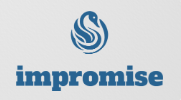Free backlinks for SEO remain one of the most impactful elements in any small business’s digital strategy. As search engines continue to evolve, backlinks still serve as a key signal of trust, authority, and relevance—especially for businesses looking to grow their online presence without a significant advertising budget.
However, not all free backlinks for SEO deliver equal value. While some can boost your domain authority, elevate search rankings, and increase visibility, others may lead to penalties or hinder performance. Knowing how to assess backlink sources and leverage trustworthy opportunities is critical for long-term success.
This guide is designed to help small business owners evaluate free backlink options with confidence. You’ll learn how to spot high-quality, reputable sources, avoid risky link schemes, and apply practical link-building strategies that support both SEO and brand credibility.
Why Free Backlinks for SEO Still Matter
Even as search engines grow more advanced, backlinks remain a signal of trust and relevance. When a credible site links to your content, it implies endorsement. For businesses without large marketing budgets, this kind of recognition offers a cost-effective way to strengthen their online position.
Free backlink platforms can be useful starting points, but their value varies widely. A link from a reputable domain helps. One from a low-quality or irrelevant source can lead to penalties or lost rankings.
The Risks Behind Free Albeit Low-Quality Backlinks for SEO
Understanding what weakens a backlink is just as important as identifying strong ones. Poor backlinks often come from:
- Spam-filled directories or link farms
- Sites with irrelevant or vague anchor text
- Pages with low domain scores and thin content
- Link exchanges or pay-to-play schemes
Search engines have grown sharper at spotting these patterns. Penalties or ranking drops can follow if your site is associated with manipulative link strategies.
For smaller businesses reliant on organic traffic, the stakes are high. That’s why evaluating free backlinks for SEO isn’t just recommended but necessary.
How to Assess Free Backlink for SEO Opportunities
Below are the core factors that separate strong backlink sources from unreliable ones.
1. Domain Authority and Trust Metrics
Domain Authority (DA), developed by Moz, predicts how well a site will perform in search results. A higher score suggests more credibility. Trust Flow, from Majestic, analyzes the trustworthiness of backlinks pointing to a domain.
When reviewing a backlink site:
- Favor domains with a DA of 30 or above
- Avoid those flagged for spam or unnatural linking behavior
- Use tools like Ahrefs, Moz, or SEMrush for analysis
Sites with modest DA can still offer value if they are niche-specific and well-maintained.
2. Industry and Topic Relevance
The more aligned a website is with your industry or subject matter, the more valuable its backlinks become. Relevance adds context and signals authenticity to search engines.
Ask yourself:
- Does this site cover topics related to your services or audience?
- Is your content likely to resonate with their readers?
- Are links placed logically within the content?
Links from unrelated sources can look artificial and trigger scrutiny.
3. Editorial Quality and Content Standards
Websites with strong editorial practices typically produce better backlinks. These sites show care in layout, grammar, and clarity—indicators of reliability in the eyes of both readers and search engines.
Look for:
- Clear formatting and consistent writing quality
- Regular updates and thoughtful curation
- Minimal pop-ups, broken links, or excessive ads
Free backlinks for SEO from these sites often carry more weight and less risk.
4. The Host Site’s Backlink Profile
A backlink’s value partly depends on the strength of the site providing it. If a site is trusted by other authoritative domains, its links can deliver more benefits.
Use SEO tools to review:
- Number of unique referring domains
- Source quality of those links
- Link trends or sudden spikes that might suggest manipulation
Sites with unstable link patterns or ties to questionable sources should be avoided.
5. DoFollow Versus NoFollow Links
Search engines treat these two types of links differently. A DoFollow tag passes ranking value; a NoFollow does not. However, NoFollow links can still contribute to brand awareness and traffic.
What matters is balance. A natural backlink profile includes both. When evaluating a free backlink option:
- Prefer platforms that offer DoFollow links
- Still consider high-traffic NoFollow sources with branding potential
Chasing only DoFollow links can appear unnatural and may lead to issues long-term.
Practical Backlink Strategies for Small Businesses
Once you know how to filter good opportunities, the next step is putting that knowledge into action. These methods offer reliable ways to earn links without spending heavily.
1. Submit to Quality Business Directories
Online directories still hold value, especially those focused on specific industries or regions. The best ones offer curated listings, profile customization, and real user engagement.
Look for directories that:
- Verify new listings
- Let you add descriptions, images, and URLs
- Cater to your target demographic or location
Avoid platforms that demand reciprocal links or charge for basic listings.
2. Write Guest Posts for Trusted Blogs
Guest blogging remains an effective tactic when done selectively. High-quality blogs often welcome contributions from knowledgeable voices in their field.
Tips for guest posting:
- Choose blogs with engaged readers and relevant content
- Submit articles that offer genuine value, not self-promotion
- Integrate backlinks naturally within the article
Skip mass-posting networks or low-effort publishing mills. One thoughtful piece on a respected blog is worth more than dozens of shallow ones.
3. Collaborate with Local Organizations
Community engagement often opens doors to backlinks that are both authoritative and relevant. Sponsorships, partnerships, and memberships can lead to mentions on local or nonprofit websites.
Consider:
- Local event pages that list sponsors with clickable links
- Online versions of community newsletters or media mentions
- Partnerships that include directory listings or features
These free backlinks supports SEO while reinforcing community ties.
4. Seek Press and Media Mentions
Media coverage offers some of the strongest backlink potential. Journalists are always looking for expert input, and being quoted can lead to links from high-authority domains.
Try platforms like Qwoted to connect with reporters. When featured:
- Make sure your website is credited with a link
- Follow up to confirm correct spelling and URLs
- Keep a press page to showcase media features
Even one media link can have a lasting SEO impact.
What to Avoid
Some free backlinks for SEO come with strings attached or hidden risks. Be cautious if you encounter:
- Link-for-link offers with no added value
- Free sites that push upsells aggressively or turn into paid schemes
- Over-optimized anchor text filled with exact-match keywords
Diverse anchor text, natural link placement, and trustworthy platforms always beat high volume with low quality.
Final Takeaways
Free backlink for SEO opportunities are everywhere, but not all are worth your time. Focus on relevance, reputation, and editorial integrity. A smart backlink strategy won’t just boost your search rankings—it will also build credibility with customers, partners, and media.
Start with platforms that serve your audience, publish responsibly, and align with your brand. As you grow, continue vetting new opportunities with the same critical eye.
At The Hive, we support small businesses by offering curated backlink options through our business directory. If you’re ready to build stronger digital roots, explore the resources we provide and take the next step toward lasting online visibility. Get your free backlinks for SEO today!
FAQ
Why do backlinks matter for SEO?
Backlinks signal trust and authority to search engines. When quality websites link to your content, it boosts your site’s credibility and ranking potential.
Are free backlinks for SEO safe to use?
Some are, but not all. Safe backlinks come from relevant, authoritative, and well-maintained websites. Spammy or irrelevant links can damage your SEO.
How can I tell if a backlink is high-quality?
Look for backlinks from sites with good domain authority, relevant content, clear editorial standards, and a healthy backlink profile. Avoid sites with spammy behavior or thin content.
What tools can help evaluate backlinks?
SEO tools like Moz, Ahrefs, SEMrush, and Majestic can help you assess a domain’s authority, trust flow, and backlink history.
Do NoFollow links have any value?
Yes! While NoFollow links don’t pass SEO authority, they can still drive traffic, increase visibility, and diversify your backlink profile—making it look more natural.
What are some safe strategies to earn backlinks for free?
Submit to trusted business directories, write guest posts for reputable blogs, collaborate with local organizations, and pursue media mentions.






